The Sail Shade Boutique - UK
UV protection from the Australian specialistsInstalling your Coolaroo Sail Shade
Full Instructions |
Full Installation Instructions for a 5m x 5m Sail Shade |
|
Where to install your Sail Shade |
|
Attaching to existing structures or new postsOnce you have decided where your shade sail is to be installed, you then need to consider where each corner of your shade sail will be attached. IF you have solid structures nearby then you may choose to use these structures to create anchor points. Even if the structure is not ideally placed it may still be possible to use it, perhaps by using stainless steel chain or rope to extend the distance between the anchor point and the shade sail fixing. It is important to use good quality steel for the fixings and the rope so that they are strong enough to cope with the tension of the shade sail, so that they will not stretch at all and that they will not rust and discolour the shade sail fabric. If you do not have existing structure nearby to create all of the anchor points that you will need, then you will need to install wooden or metal posts to create these necessary anchor points. To work out the exact position of your anchor points the easiest way of doing this is generally to remove your shade sail from its packaging and lay it on the ground in the exact position where you wish it to be installed. When you are happy that you have your shade sail in the perfect position you can calculate the correct position of the anchor point. To do this, take an object with a straight edge and bisect the angle at the corner of the shade sail. This line will be the correct direction in which the anchor point should be created. Once you have the correct direction you need to calculate the minimum distance to the anchor point. You will need to allow for the turnbuckle and other fixings and some stretching of the shade sail. We recommend that you leave at least 350mm. Shade sails should not be installed horizontally otherwise any rainwater will run towards the middle of the fabric, causing the fabric to sag and the rainwater to gather in the middle and to slowly drip through the fabric. It is recommended that a shade sail is installed with one side of the shade sail 30cm or more higher than the other side so that the vast majority rainwater will flow towards the lowest point. You should ensure that the lower points are where you want any rain water to fall so in the case of a shade sail which is installed to the side of a house on one side and posts in the garden on the other, it is probably desirable to have any rain water flow towards the garden. Many customers decide to install their square or rectangular shade sail with architectural twist. To do this it is recommended that the height differences between the fixing points are in the region of 60-80 cm for a 3.6m x 3.6m square shade sail, and in the region of 1m to 1.2 m for a 5m x 5m square shade sail |
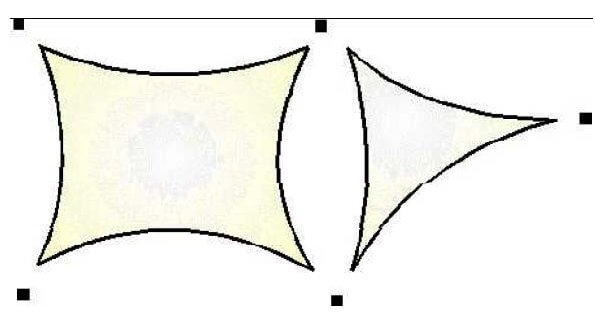
|
|
It is relatively easy to rectify any problems that arise if the distance between the corner of the shade sail and the anchor point is too large by using an additional turnbuckle, a length of stainless steel rope or a length of stainless steel chain. If the distance is not sufficient, however, then you may not be able to tension the shade sail correctly. This will have implications for the longevity of your shade sail and will also mean that water may pool in the center when it rains and the canvass may sag effecting its visual appeal.
You should remember that the fabric of the shade sail will expand under tension and over time so that a 5m length may expend by up to 15cm. A new shade sail installation should not use all of the available space between the anchor point and the shade sail corner fixing to allow for this stretching over time. Regardless of the shape or size of the shade sail you are installing, you should always leave enough space between the corner of your shade sail and the anchor point so that the shade sail can be tensioned correctly. |
|
When installing a wooden or metal fixing post, then the depth to which it should extend under the ground will depend on the size of the structure being built and total height required above the ground. As a very basic guide it is often stated that when installing any post, a third of the post should be below ground with two thirds above. Using this guide, if you want to install your shade sail at a height of around 2.4m, then you will require a post of 3.6m in length with 1.2m buried below ground level. Although only a general guide, this one third below ground, two thirds above ground concept has been successfully used as a building standard for many, many years and so we strongly recommend that you follow this guide. It also possible to angle the post directly away from the direction in which it will be pulled by the shade sail, and this can increase the resistance of the post to any movement (view the Coolaroo installation guide (english) for more information)
If your posts are not buried to sufficient depths, then they may move when the shade sail is tensioned. Should this happened then repositioning the post to correct the movement may prove more difficult the following the guide from the start as even a minor amount of movement at the base of the post may compromise the positioning of the shade sail, causing it to not be taught and reducing its longevity. If your post is installed in soft areas of earth, for example perhaps it passes through a layer of soft sand, then the depth of these layers should not be included in the calculation of the required depth. For most holes used for fixing posts a diameter 350 mm is recommended, but depth is the most important factor. |
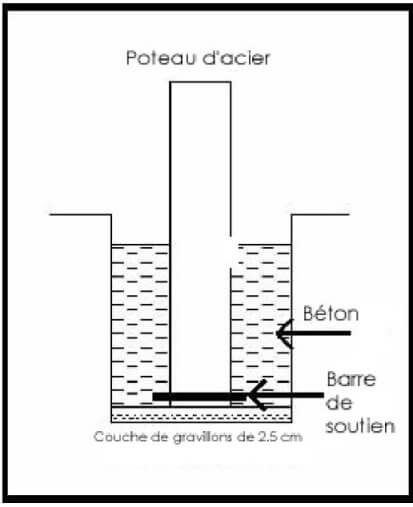
|
Installation |
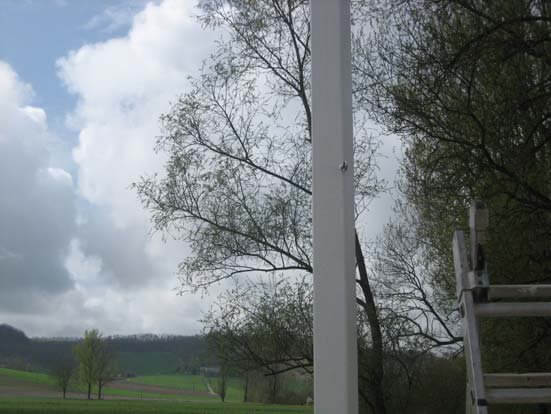
|
Create the appropriate anchor point on your post. You can use a surface mounted fixing secure by long screws, or a fixing which goes through the post.
To create a twisting effect the fixings should be positions at different heights. |
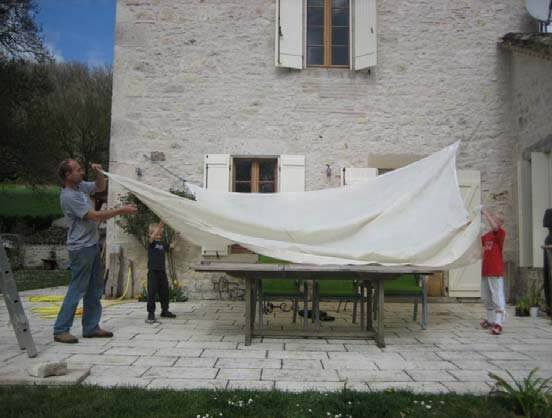
|
Unpack and unfold the shade sail and position where you wish it to be installed. |
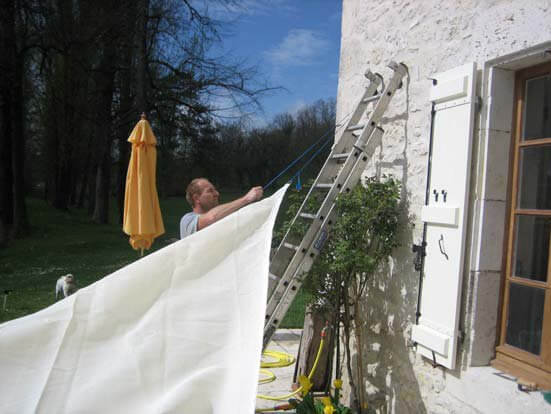
|
Attach the shade sail to the first anchor point using a rope or similar. |
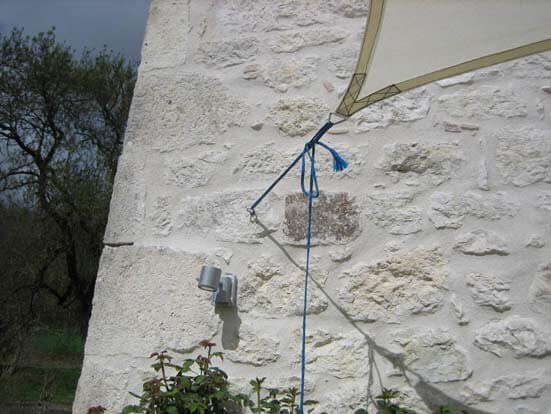
|
Use the rope to shorten or lengthen the position of the shade sail so that it is in its final position' |
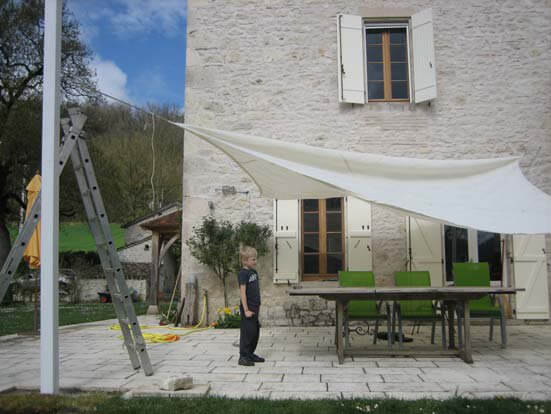
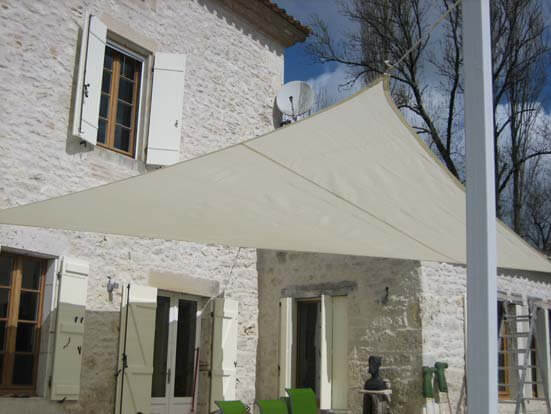
|
Repeat these steps with the remaining corners of your shade sail so that it is in its approximate positions. |
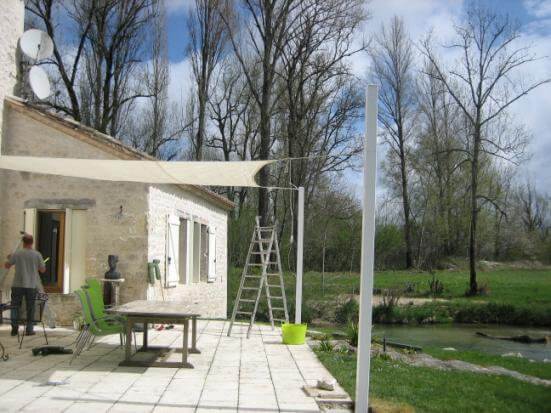
|
Adjust the length of the ropes at each corner until you are happy with the final position |
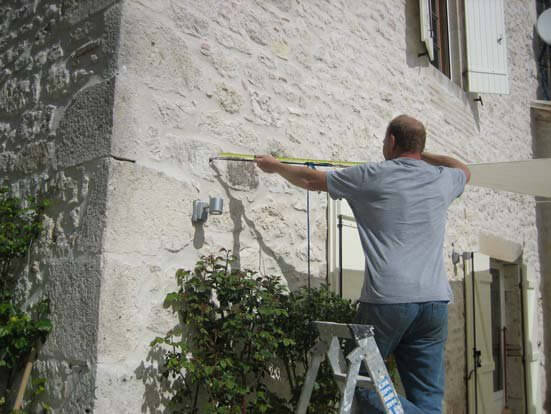
|
Measure the distance from the anchor point on the wall or post, to the fixing ring at the corner of the shade sail |
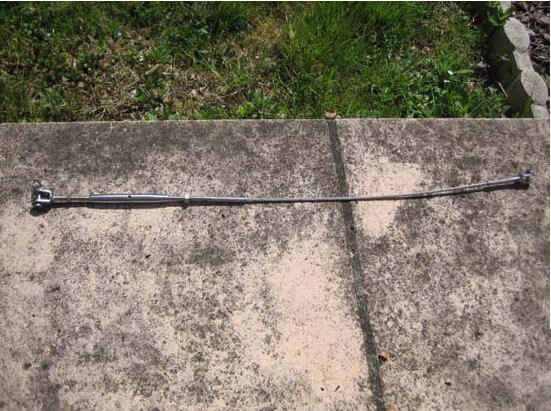
|
Prepare the stainless steel fixings for each corner. In this example a 6mm stainless steel cable is used with a turnbuckle at one end.
For domestic installations we recommend the use of 8mm marine grade turnbuckles, carabiners and stainless steel rope or chain if necessary. |
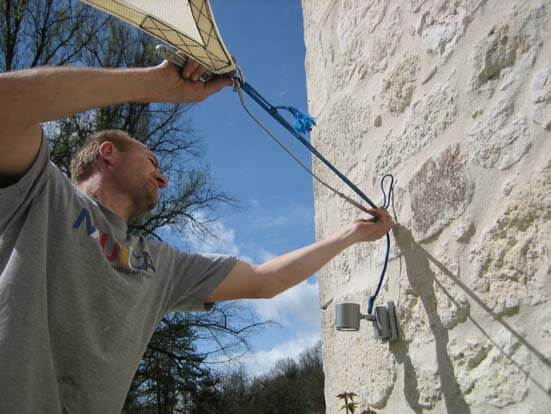
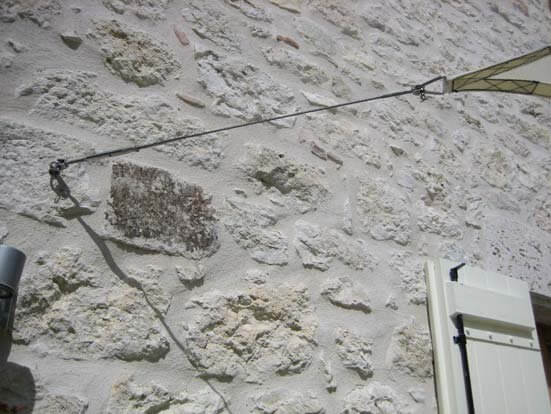
|
For each corner of the shade sail attach the stainless steel fixings open to their maximum size and remove the rope. |
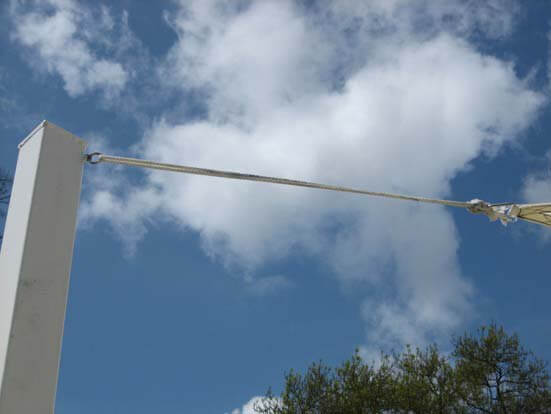
|
At each corner tighten the turnbuckles to tension the shade sail. You will probably need to visit each fixing several times so that they are tightened at the same rate. Once the Sail Shade has been stretched correctly it should become rigid. This rigidity will ensure that the shade sail does not move in the wind and it will prolong the longevity of the sail. |
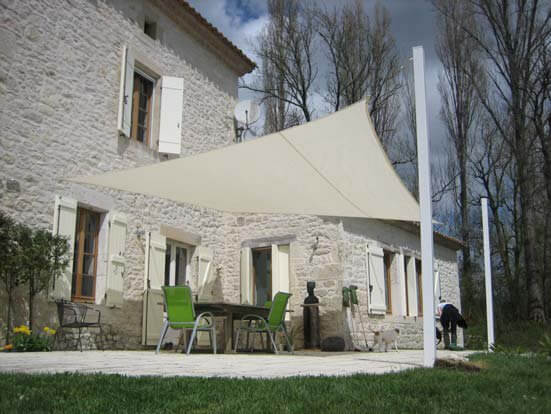
|
Your shade sail is now installed ! Now you can enjoy a well earned rest underneath your new shade sail ... |
Important Considerations |
Important points to consider when installing a shade sail |

|
|
When planning the installation of your sail shade there are a number of points you should consider, not least of which is how it will look. Good planning will ensure that your shade sail provides the shade safe from the sun's harmful UV rays that you require, and that it will look beautiful as well.
The most important decision is where you would ideally like to create shade. Many people choose to shade a terrace, a children's play area, a swimming pool or an increasingly popular use if to create a car port. No matter where the shade is needed, you need to decide how your shade sail will be held in place. In many cases a shade sail can be fixed to existing structures such as the wall of a house or a large, mature tree. You may also need to install posts to create new fixing points. Often the solution will be a mixture of existing structures and new posts. |
Architectural TwistShade sails should be installed under tension so that they do not move in the wind. If a square or rectangular shade sail is installed with the fixing points at different heights then the shade sail will appear to twist when is is stretched. See our inspiration page for images of this effect. To create this twist, simply vary the height of the fixings by 30 to 50 centimeters at opposing corners. Shade sails should always be installed with a variation in height between the fixings so that any rain water will roll towards the edge. Normally this achieved by having two of the fixing points at one height, and the remaining fixing points 10 to 20 centimeters lower so that any rainwater will fall towards to the lower edge. In many installations, the fixing points on the side of the house are higher than those on the garden side of the shade sail so that the rain will fall from the edge of the shade sail nearest the garden. Shade sails that have been installed with architectural twist are often consider to be more interesting visually. We recommend that you give some thought to installing a square shade sail in this manner. |
The size of the shade sailWhen installing a shade sail the distance between the fixing point will need to accommodate the length of the shade sail (for example 5m by 5m), the fixings at each corner, plus an allowance for the shade sail to stretch when tension is applied. Typically a 5m length will stretch over time to 5.15m when tensioned and this should be allowed for. So for a 5m length you will need to allow for : the 5m length, stretching of 15cm and two sets of fixing (one set at each end) which can take from 28cm to 36cm each. So for a 5m shade sail length, a total of 5.65m to 5.85m will be required. It is very important to leave space for the turnbuckles and other fixings as these are essentials for the stretching of the canvass to take place. Once taught your shade sail will become rigid and will easily cope with high winds and other weather conditions other than snow. We strongly recommend that you install your shade sail fixing points allowing for the fixing kit and for the fabric to stretch. |

|
The movement of the sun during the dayWhen planning where you would like your shade, you should remember that the sun will move across the sky from east to west during the day. Your should therefore plan not only where you want the shade, but also when during the day to correctly position your shade sail. You should also be aware that the sun will be higher in the sky during the summer as opposed to other times of the year. Shade sails not only provide a cool, shaded area in which you and you loved ones can relax, but the have also been designed to offer protection from the sun's harmful UV rays. As the sun's UV rays are most dangerous between 11am and 3pm, we recommend that you plan where to create your safe shade around these times of the day. Your shade sail will not only help you to stay cool at these times, but will provide you with UV protection when it is need most. |
Fixing your shade sail to an existing structuresOur shade sails are designed to withstand all but the most extreme weather conditions. In case of bad weather and especially where there are strong winds, the shade sail will exert significant pressure upon its anchor points. You should therefore ensure that the structures to which the shade sail is attached are robust enough to withstand these forces. When fixing a shade sail to the wall of a building you should ensure that it will be strong enough. If you are at all unsure you should consult a qualified builder or similar. We always recommend that you remove your shade sail when snow is forecast because the accumulated snow can have a significant weight that the shade sail fabric and fixings are not designed to withstand. You should also consider taking down your shade sail if unusually high winds are forecast. Our fixing kits include turnbuckles and snap hooks so that the removal of a shade sail can be carried out very rapidly in only a few minutes. |
Fixing Posts - Which material should you useIt is recommended to use steel or aluminum posts rather that wooden posts. Stainless steel and galvanized steel posts are stronger than wooden posts, and they will not rot especially at ground level as wooden posts are prone to do after a few years. Steel posts are stronger than aluminum posts, however the latter are more resistant to rust. Wooden posts are generally less expensive but should be of a reasonable dimension (we recommend a minimum 125 mm x 125 mm). Wooden posts can be more aesthetically pleasing than steel posts, but they need to be examined every year to make sure that they remain in good condition. |
Abridged Instructions |
Quick Guide for installing a Sail Shade
|
|
|
To mount your sail shade to existing fixings takes you very little time. If you remove the shade sail in winter, this is the process you will follow the following spring.
For information on the location of fixings, choice of poles, etc. please see our full installation guides, but if you're lucky to have existing structures or poles in place you can install your shade sail very easily and quickly. |
|
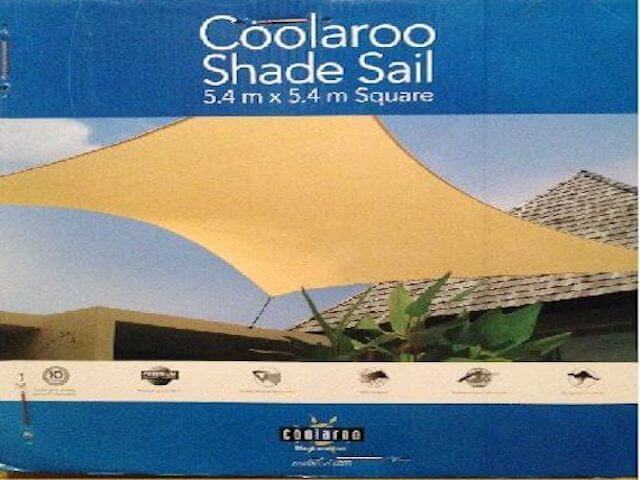
|
Remove the sail shade from its packaging |
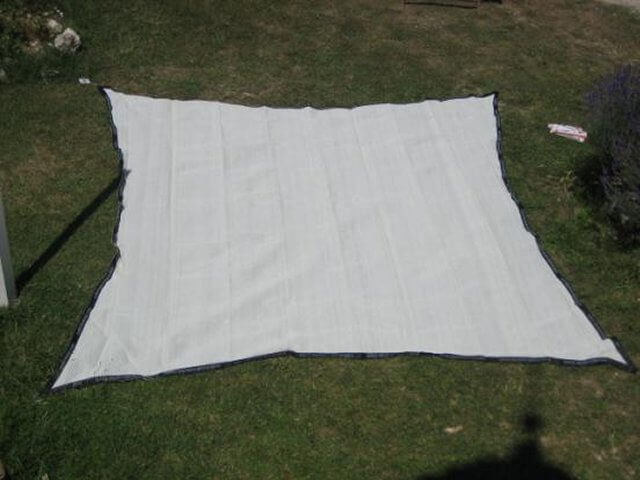
|
Unfold the shade sail. Decide which way around you want your shade sail |
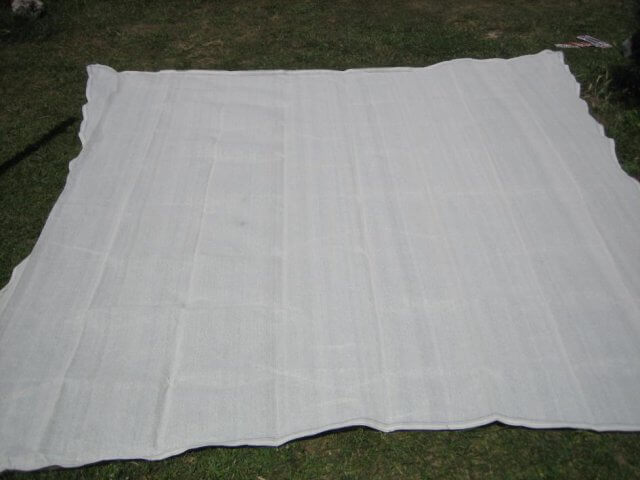
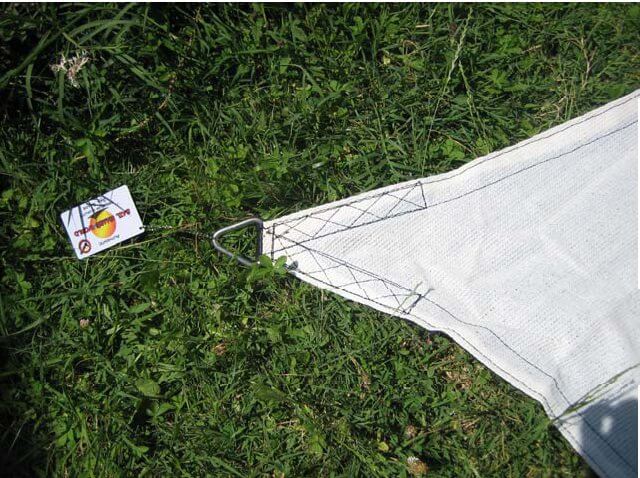
|
Note the reinforced edges on the under side of the shade sail (you will see them clearly when the sail is lifted into position) |
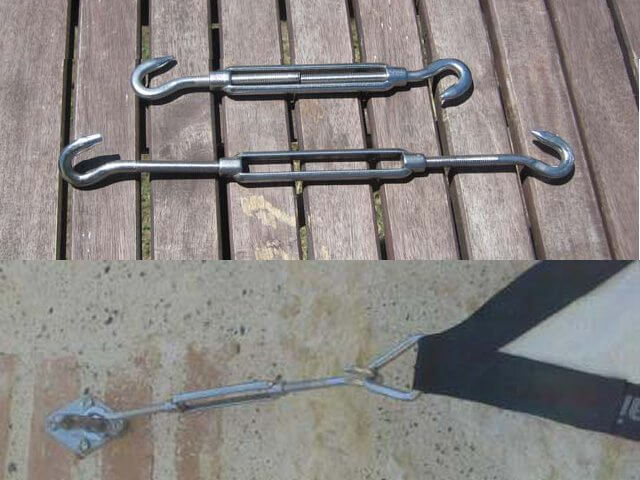
|
Here we are using turnbuckles. Open the turnbuckles to their maximum length |
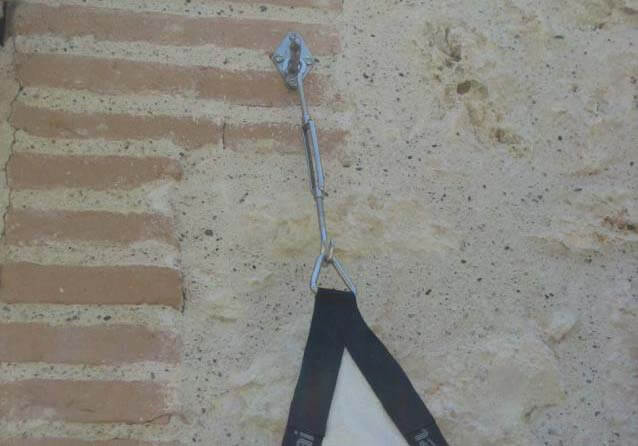
|
Attach the turnbuckle to the shade sail and the existing fixing on the wall or post |
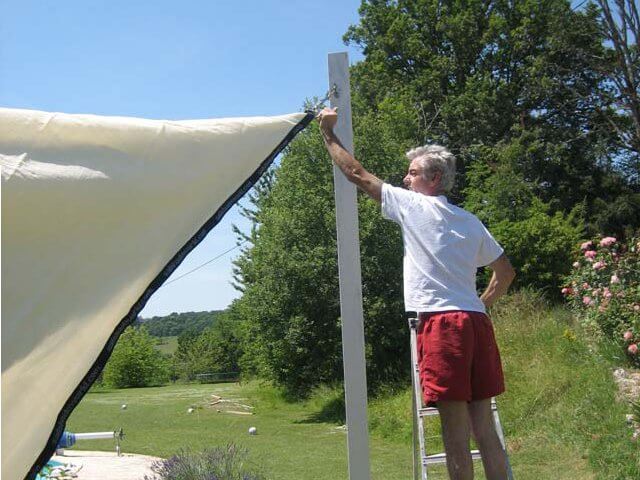
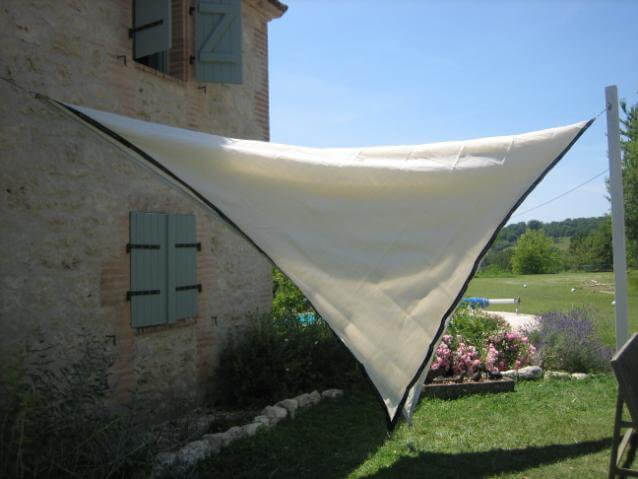
|
Repeat this action for the opposite corner |
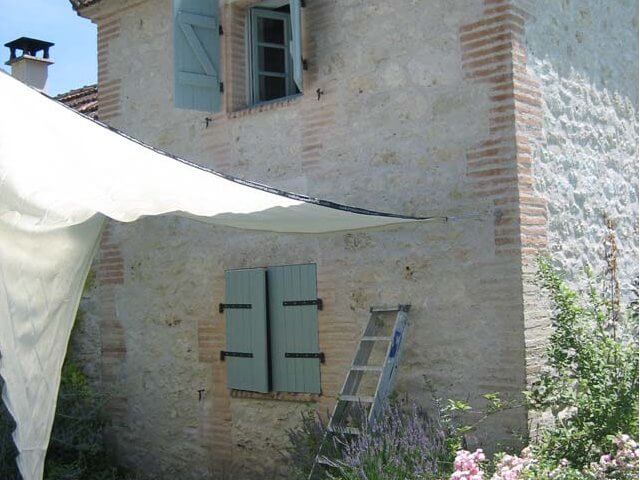
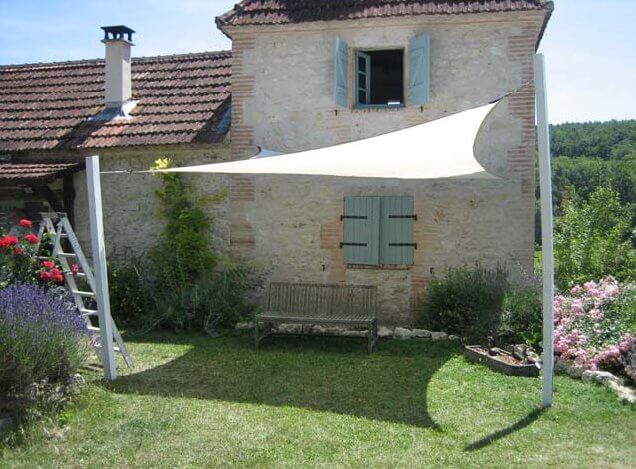
|
Attach the fixings to the remaining corners |
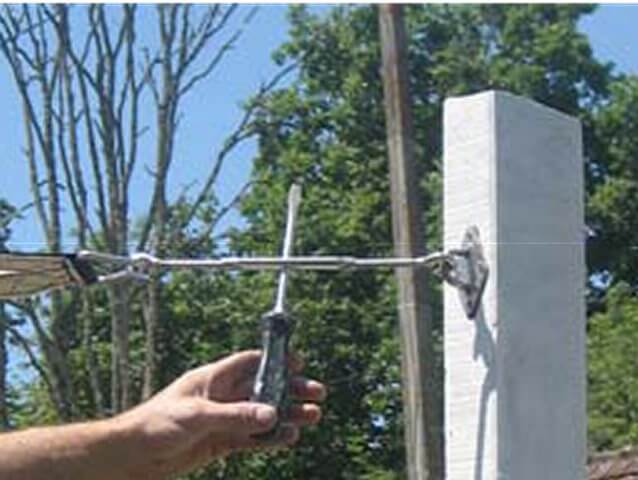
|
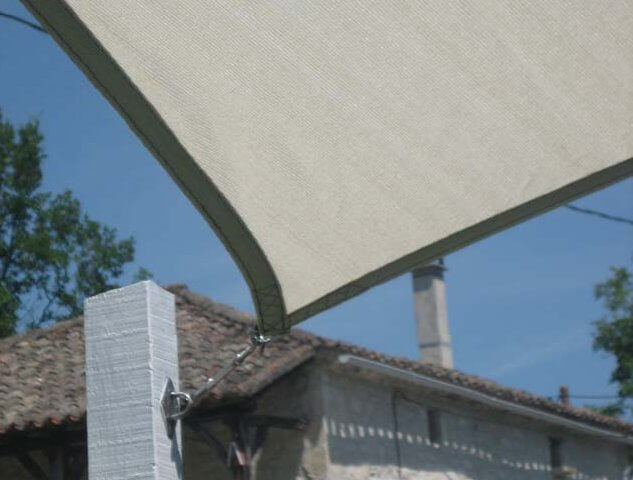
|
Tighten the turnbuckles so that the shade sail is well tensioned. It is very important that the sail is stretched to create the necessary tension. This allows the sail shade to adopt is customary shape and ensures that it will last a long time, even in windy conditions |
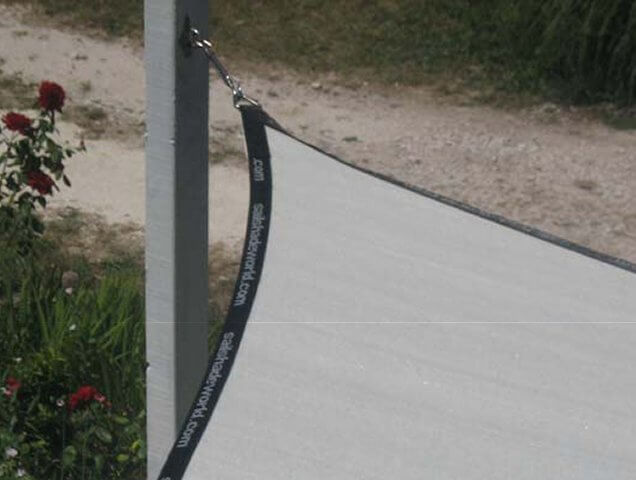
|
Here is a view of the shade sail from beneath |
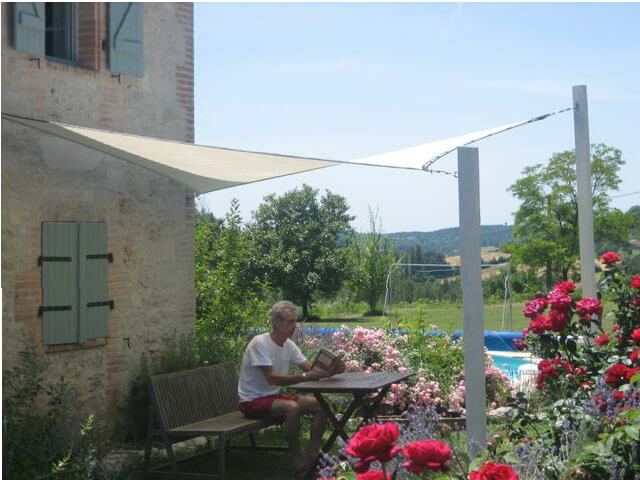
|
That's it ! Sit back and relax in the shade .... |
|
|||